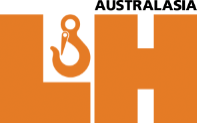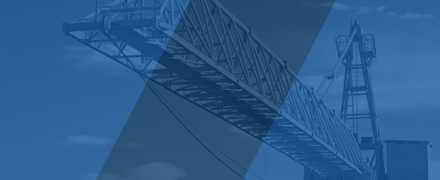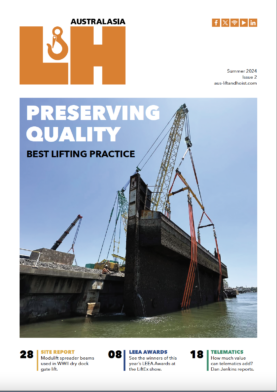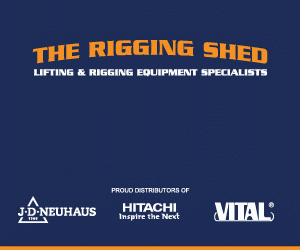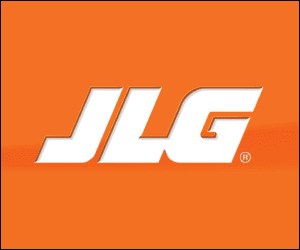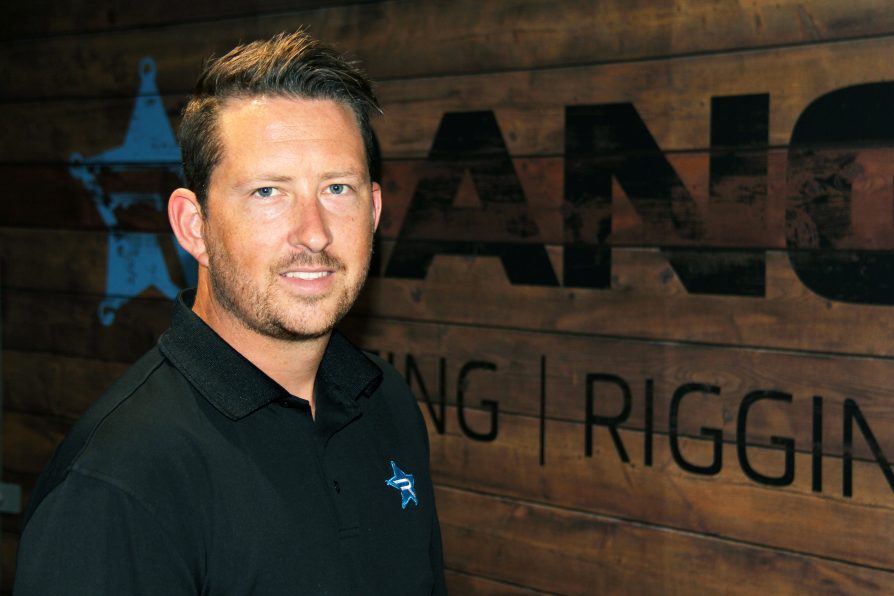)
Head for heights
When working at height, it is important to be properly trained and consult the experts, says Ashley Thacker of Ranger Lifting.
I was talking to height safety expert James Moule, of LINQ Height Safety, recently. Our conversation was two-sided in that much of it was positive, about the progress Australian industry has made in height safety in recent years, but we agreed that there is still a long way to go before we can say, as a nation, we are fully safe at height.
First, the good news.
As James has detected over a 20-plus year career in height safety, there is now much wider acceptance about fall protection and fall prevention solutions. In other words, a much larger percentage of people are using safety equipment on jobsites when they are working at height. This has happened at the same time as the evolution of height safety equipment. Modern work at height gear is more efficient, more comfortable to wear, easier to use, and generally more available. It has created an environment where it is easier to be safe.
It’s also true that the Australian Standard 1891 is widely trusted and accepted by those who need to understand it. The recently-updated documentation covers all the important detail about manufacture, testing, inspection, use, maintenance, and so on. As a result, most end users recognise the importance of receiving competence-based training before they even think about working at height.
Employers shouldn’t ask anyone who is untrained to work at height and an employee should speak up if they are asked to do so. Training is readily available, which is of benefit to all parties.
However, as James and I explored, there is still a long way to go.
We both continue to see harnesses being used that do not fit correctly. The leg straps might be too loose or the shoulder straps hanging off. Other times the misuse isn’t as easy to spot but it’s there nonetheless. A pre-use inspection might have been missed or failed to spot rips, tears, discolouration, rust, or date of periodic inspection, for example. Many people still fail to realise that a harness only has a 10-year lifespan, and it might not even last that long.
Of course, it might also be the case that a perfectly good harness is used and it fits well, but it isn’t appropriate for the type of work involved. If there is a requirement for a user to work near electrical equipment or even just wear a harness for a long period of time, there are types that are more suitable than others.
Really, it doesn’t matter what the oversight is, as even the slightest problem can lead to catastrophe if the worst should happen and the equipment is required to prevent or break a fall.
One solution end users might look at is better consulting suppliers and industry experts. I’ve included some of our frequently asked questions below, not to expose industry’s ignorance, but to encourage anyone in doubt to raise their hand, and share our responses in assumption that plenty of others are wondering the same thing:
Work at height FAQs
Do I need to be trained to wear a harness?
Yes, under Australian Standards if you are working at a height where you are at risk of falling you are required to wear a harness and to complete an accredited working at heights course.
When do I need to wear a harness?
Under Australian Standards, when you are working at a height of 2m or more and there is a risk of a fall.
What harness can I wear when welding?
When welding the use of a harness and lanyard manufactured from heat-resistant webbing is required as general purpose harnesses are made of polyester and will burn if there is any contact with weld splatter.
What is the difference between fall arrest and fall restraint?
Fall restraint means that we can work at height with no risk of falling. However, all such equipment must still be rated for fall arrest. Fall arrest is for scenarios where there is a risk of falling and safety equipment reduces the load on a person and limits the distance of fall where possible.
When do I need to work in fall restraint?
Wherever possible you should try to work in fall restraint, meaning take out the possibility of a fall.
Can I work at heights without a harness?
The only way you can work at heights without a harness is when any chance of a fall is completely eliminated. This can be done with scaffolding, handrails, etc.
How often am I required to have equipment inspected?
Under Australian Standards, all equipment should be inspected prior to use and every six months by a competent person.
What is a height safety engineered system?
A system that is installed permanently on a roof or a structure that has been engineered to allow people to walk freely. The system could be a wire rope or a rail system. The system generally works in tandem with anchor points being installed for access.
How often do I need to have my height safety engineered system inspected?
Most systems are required to be inspected yearly but, depending on the environment that they are installed in, more frequent inspections may be required.
What is an anchor point?
An anchor point, or anchorage, is one component of a personal fall arrest system, which is designed to prevent injury to workers should they fall. This refers specifically to the point at which an anchoring device is affixed, fastened, tied, or otherwise connected to a support location.
What is a lanyard assembly?
An assembly of line, of either fixed or adjustable length, and components that will enable a connection between a harness and an anchorage, the intent of which is to limit the deceleration during the arrest of a fall.
What is a pole strap?
A positioning strap designed to be placed around a pole or other vertical structural member and attached at two points, one on each side of a harness, whilst the wearer is working on the pole or the structural member in order to create a restrained fall system.
Relevant standards
It’s important to note, as of August 2020, there were three new standards from Standards Australia, representing separation of the document AS/NZS 1891.1:2007 into three standalone documents:
1891.3:2020 Personal equipment for work at height; manufacturing requirements for fall-arrest devices.
1891.1:2020 Personal equipment for work at height; manufacturing requirements for full body combination and lower body harnesses.
1891.5:2020 Personal equipment for work at height; manufacturing requirements for lanyard assemblies and pole straps.
AS/NZS 1891.5 (2020) separates out lanyard assembly and pole strap requirements from harnesses (previously under one standard). The purpose is to document specific requirements for the materials, design, manufacture, testing and labelling of lanyard assemblies and pole straps.
There are seven key changes to note.
- Elimination of unnecessary product testing through inclusion of a deemed to satisfy process.
- Introduction of testing and labelling of lanyards for a range of user mass.
- Increased requirements for testing of adjuster creep.
- A requirement to test each product dynamically and then statically.
- A reduction of test loads to reflect this new testing process.
- The introduction of minimum requirements for both connector gate loading strength and major axis strength.
- Removal of the usage of natural fibre ropes.
However, there are three especially interesting areas that readers of this magazine should note that cover mass range testing; dynamic and static testing; and connector gate loading.
Mass range testing
The idea is to help users identify a safe minimum and maximum user mass weight rating for each individual item. The label should advise that user mass is defined as the mass of the user plus their clothing, personal protective equipment, and carried tools and materials. Lanyard assemblies shall be tested for the upper and lower user mass range for which they are labelled.
Further, clear instructions for fitting, adjustment and use shall be supplied with each component covered by the standard. A series of additional matters shall also be included in the instructions, from advice users may need to consult to minimum fall clearance required below the anchorage point, for the minimum and maximum user capacity specified for the lanyard.
Dynamic and static testing
Dynamic test—lanyard assembly: Lanyard assembly dynamic testing comprises of a series of tests applied for the purpose of assessing the energy absorbing effectiveness of the lanyard assembly, and its maximum total extension after the specified test fall. It includes an integrity test for twin-tail lanyard assembly simulating an incorrectly stowed unused second tail.
Dynamic test—pole strap: The performance of pole strap assemblies fitted to a full body or lower body harness when subjected to dynamic loading of those assemblies shall be tested in accordance with the standard.
Static strength test—lanyard assembly: The tensile strength for the entire lanyard assembly in its fully extended condition and the connection between the tails for twin tail lanyards shall be tested in accordance with the standard.
Static test—pole strap: Immediately following the dynamic test earlier specified, the pole strap shall be tested for tensile strength by application of steadily increasing tensile force to the assembly in accordance with the standard.
Connector gate loading
A connector is a load bearing, openable device used to connect components, which enables the user to assemble a system in order to link directly or indirectly to an anchor. Connector gates and major axis points should be strong enough to withstand a maximum load. Also, they must be manufactured and tested in accordance with international standards: NSI/ASSP Z 359.12; or EN 362 (connectors conforming to EN 362 must also have a gate resistance ([ace and side] of 6 kN minimum).
In conclusion, it’s evident that what James Moule and I assumed at the outset is right: we have made undoubted progress in terms of working at height safety, but there is a long way to go and industry must continue to consult the revised standards and speak to experts in this specialist field. Australian Standard 1891 is a respected document and its importance is being increasingly understood, but people still go to work at heights every day without the appropriate training or equipment, which is a practice we must end.
